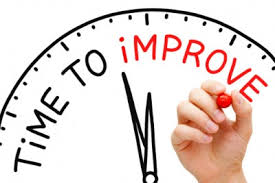 A few years ago I noticed some of the letters being sent to me by non-profit organizations were getting less wordy. In fact, these next generation donor communications pieces were mostly featuring a big photograph of someone/something that was supposedly mission-focused.
A few years ago I noticed some of the letters being sent to me by non-profit organizations were getting less wordy. In fact, these next generation donor communications pieces were mostly featuring a big photograph of someone/something that was supposedly mission-focused.
At first, I really didn’t like this new approach to donor communications. Don’t get me wrong . . . I disliked the blah-blah-blah letters. Like most readers, I would read the old solicitation letters like this:
- Salutation (e.g. did they spell my name right?)
- First few sentences (e.g. how much do they want and what’s the case for support this time?)
- Skip to the signature (e.g. do I know the person who signed the letter?)
- Post script (e.g. don’t know why, but I always read the P.S.)
- If this five second review hooks me, then I’ll go back to the beginning and start skimming (honestly probably paying more attention to bullets, highlighted text and anything in bold/italics)
It was even worse with gift acknowledgement letters, which I would read like this:
- Salutation (e.g. did they spell my name right?)
- Did they get my pledge or gift amount right? (e.g. this is for the IRS and I can’t afford an error)
- Is there a personal notation on the letter (e.g. did my gift merit a little love or was this just a transaction?)
- Is the boilerplate IRS verbiage about the value of any goods or services being received by me from the non-profit as part of my contribution correctly listed (e.g. as I said earlier . . . I don’t wanna tangle with the IRS)
The first few times I received what I am describing as “next generation donor communication pieces,” I simply didn’t like it because it represented change. It threw me off my reading routine, which is silly reason to dislike something. Right?
However, the first time one of these letters was used to acknowledge my contribution by a local non-profit organization, I was upset for a few reasons:
- In their haste to use as few words as possible, they got wrong the boilerplate IRS verbiage about the value of any goods or services being received (this was a technical error)
- I felt slighted because it was as if “my gift didn’t even rise to the level of deserving a handful of kind words” (by the way, the letter couldn’t have been more than three or four sentences with a giant cute picture of a client)
And then . . . I changed my mind after recently receiving the following year-end solicitation letter from my alma mater

Three short paragraphs. One large picture. Lots of wonky ways to give my money.
Here is what appealed to me and changed my mind about this style of donor communications:
- The picture took me back to my college years. I know exactly where those four students are standing. I’ve stood there before. I suspect that I felt that same way they appear to be feeling. This picture created an immediate emotional connection for me in a way that words never have.
- The logo at the top of the letter also created an immediate emotional connection. It is a picture of the iconic Alma Mater statue. For many students, this artwork at the entrance to the Quad symbolizes many things (e.g. a sense of welcoming, nurturing, school pride, etc). Many students have fond memories attached to this statue.
- The shortened fundraising verbiage cut to the bottom line and the three most important things to me and most other donors: a) the university is grateful for my last contribution; b) my gift made a difference in the life of a student; and c) they want me to continue my support. All three of these messages are emotional in natural (e.g. they love me, they flatter me, they want me back).
- The multitude of choices is appealing (e.g. cash, credit, EFT/ACH, monthly giving options, gift restriction options). This makes me feel “in charge” and not like I’m giving money to a large, faceless organization that is going to do whatever it pleases with my financial contribution. Again, another emotional message (e.g. providing choice implies trust and respect in our society)
I’ve been a fan of Tom Ahern for years. I think he is one of the smartest donor communications experts in the field. In his videos and e-newsletters he often takes about the the six most powerful emotional triggers that marketers use to get people to do “something” like purchase a product, vote for a candidate, make a charitable contribution, etc.
Just in case you’re wondering, here are those six emotional triggers:
- anger
- exclusivity
- fear
- flattery
- greed
- guilt
Tom also talks about the 13 strongest words used by marketing professionals. Here is a list of those words:
- discovery
- results
- proven
- early
- safety
- free
- save
- guarantee
- new
- money
- health
- YOU
I love Tom, but I do cheat on him from time-to-time by reading other donor communications and direct mail experts like Mal Warwick. 😉
The following are five positive triggers that marketers use to emotionally move us to do something:
- hope
- love
- compassion
- duty
- faith
As you review these lists of emotional triggers and powerful words offered by some of the smartest thought-leaders on this topic, can you identify which trigger the University of Illinois wove throughout its letter? Can you see how they did it? If you look really hard, you’ll be surprised at how much more is actually going on in this very short and powerful letter.
Please use the comment box to share your thoughts and observations. We can all learn from each other.
Here’s to your health!
Erik Anderson
Founder & President, The Healthy Non-Profit LLC
www.thehealthynonprofit.com
erik@thehealthynonprofit.com
http://twitter.com/#!/eanderson847
http://www.facebook.com/eanderson847
http://www.linkedin.com/in/erikanderson847

 Your nonprofit is constantly trying to improve. Whether you’re developing an efficiency hack for your staff members or trying new fundraising events, openness to change is what allows your organization to grow, acquire more donors, and raise more money for your cause.
Your nonprofit is constantly trying to improve. Whether you’re developing an efficiency hack for your staff members or trying new fundraising events, openness to change is what allows your organization to grow, acquire more donors, and raise more money for your cause. Abby Jarvis is a blogger, marketer, and communications coordinator for
Abby Jarvis is a blogger, marketer, and communications coordinator for  Well, it happened to me and my husband again just the other day. We were asked to dinner by a non-profit friend. It was a simple dinner invitation, and one that we’ve been working on setting up for more than a year. We weren’t in the restaurant for more than 15 minutes and the pre-meal cocktails had just arrived, when our friend was asking us to give some consideration to making a contribution to their organization’s endowment fund.
Well, it happened to me and my husband again just the other day. We were asked to dinner by a non-profit friend. It was a simple dinner invitation, and one that we’ve been working on setting up for more than a year. We weren’t in the restaurant for more than 15 minutes and the pre-meal cocktails had just arrived, when our friend was asking us to give some consideration to making a contribution to their organization’s endowment fund. Simply, I believe soliciting unsuspecting prospects and donors is detrimental to your organization (and to everyone else in non-profit sector) for the following reasons:
Simply, I believe soliciting unsuspecting prospects and donors is detrimental to your organization (and to everyone else in non-profit sector) for the following reasons: In an effort to do may part to help eradicate the “ambush” tactic from our non-profit toolbox, I will share with you some of the tips from this video.
In an effort to do may part to help eradicate the “ambush” tactic from our non-profit toolbox, I will share with you some of the tips from this video.
 In my last blog post I talked about a USA Today article from John Waggoner titled “
In my last blog post I talked about a USA Today article from John Waggoner titled “ Then, he launched into a story about the importance of what he called “sacrificial giving” and “giving until you can feel a little pinch in your wallet.” The following are just a few of the reasons I recall from that conversation why it is important to give until it hurts:
Then, he launched into a story about the importance of what he called “sacrificial giving” and “giving until you can feel a little pinch in your wallet.” The following are just a few of the reasons I recall from that conversation why it is important to give until it hurts: Your strategy doesn’t have to be complicated. In fact, the following is a simple upgrade strategy that one of my former employers put together:
Your strategy doesn’t have to be complicated. In fact, the following is a simple upgrade strategy that one of my former employers put together: Sorry about not posting something this morning, but I got to my hotel late last night (around midnight) and I was up five hours later for a 6:00 prospect identification/evaluation meeting. My request of Santa this year is more time added to the day and a few more weeks added on to the year. 🙂
Sorry about not posting something this morning, but I got to my hotel late last night (around midnight) and I was up five hours later for a 6:00 prospect identification/evaluation meeting. My request of Santa this year is more time added to the day and a few more weeks added on to the year. 🙂 Successful #GivingTuesday solicitations probably utilize some of the same strategies that for-profits use to create the conditions for an impulse buy. Now it all makes sense. (I might not be quick, but I usually get there.) 🙂
Successful #GivingTuesday solicitations probably utilize some of the same strategies that for-profits use to create the conditions for an impulse buy. Now it all makes sense. (I might not be quick, but I usually get there.) 🙂 One of the many projects I’m currently working on involves cataloging a resource development toolbox for a client. The things I’m finding in that toolbox are amazing and include: samples,templates, whitepapers, training curricula, calculators, and even an online wizard to help with resource development planning. (Cool stuff!)
One of the many projects I’m currently working on involves cataloging a resource development toolbox for a client. The things I’m finding in that toolbox are amazing and include: samples,templates, whitepapers, training curricula, calculators, and even an online wizard to help with resource development planning. (Cool stuff!) There has been lots written throughout the years about the psychology of philanthropy. Most of the stuff I’ve read has been right on target with regards to why people open their wallets/purses and give money to a non-profit organization. I’ve been asked to revise a whitepaper titled “Why People Do and Don’t Give Money” for a national organization’s online fundraising toolbox to which their local affiliates have access. So, I thought I’d ask you and the rest of the DonorDreams blog community for a little help this morning. Would you please be so kind and give me one minute (or less) of your time at the end of this post?
There has been lots written throughout the years about the psychology of philanthropy. Most of the stuff I’ve read has been right on target with regards to why people open their wallets/purses and give money to a non-profit organization. I’ve been asked to revise a whitepaper titled “Why People Do and Don’t Give Money” for a national organization’s online fundraising toolbox to which their local affiliates have access. So, I thought I’d ask you and the rest of the DonorDreams blog community for a little help this morning. Would you please be so kind and give me one minute (or less) of your time at the end of this post? On Tuesday, I wrote a post titled “
On Tuesday, I wrote a post titled “ What if your spouse or friend approached you and said, “I am really hungry and I need you get me food and make a meal before I starve.” However, they didn’t tell you:
What if your spouse or friend approached you and said, “I am really hungry and I need you get me food and make a meal before I starve.” However, they didn’t tell you: A few observations:
A few observations: